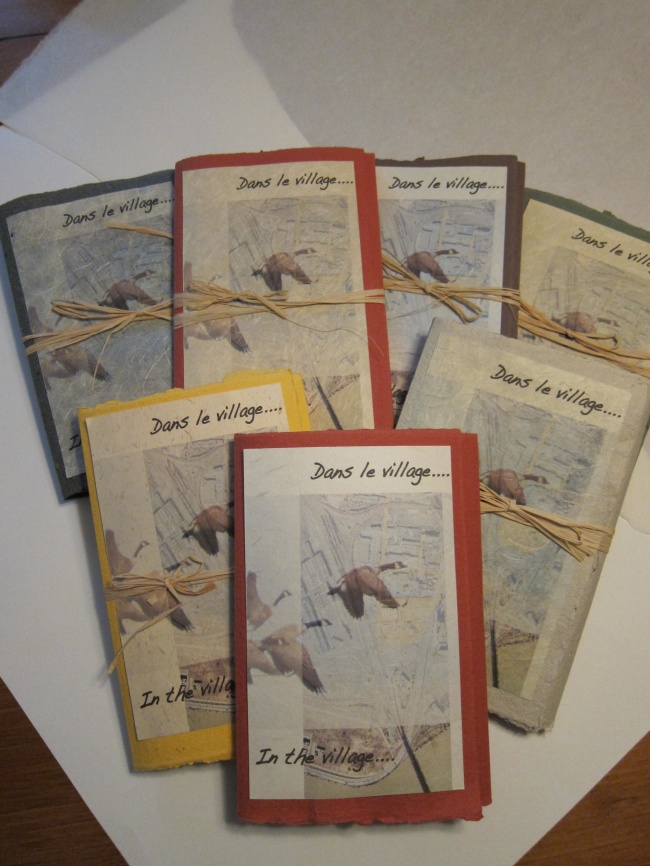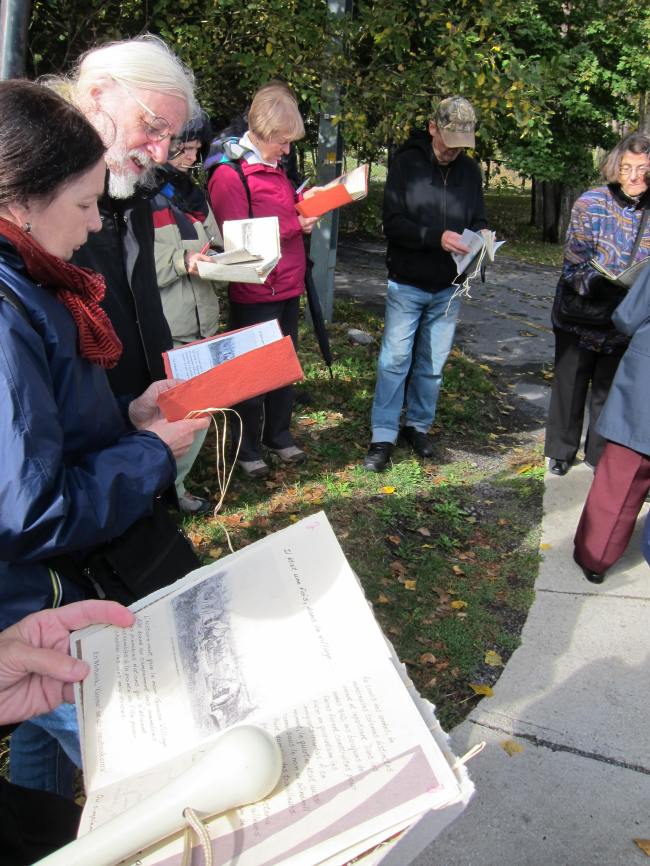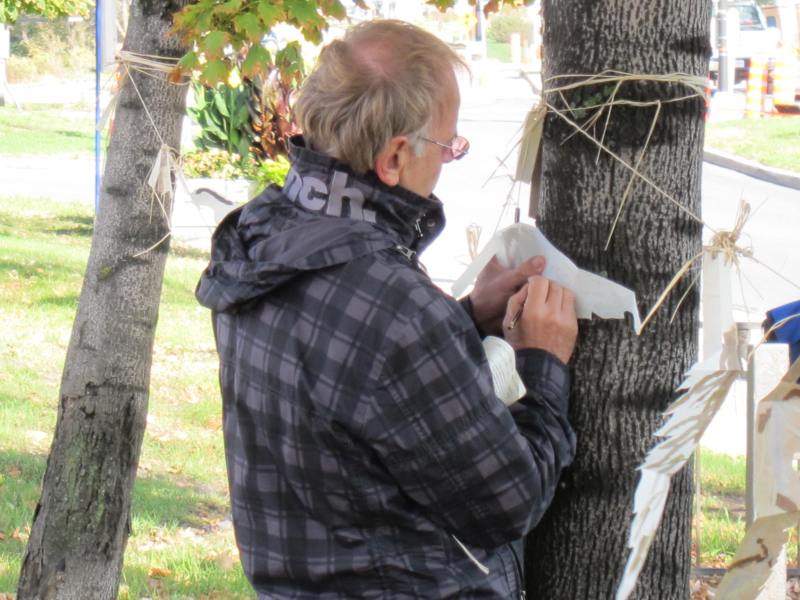In the village… (2012) is an artist’s project commissioned by the Centre d’histoire de Montréal in association with their exhibition, “Quartiers disparus/Lost neighbourhoods” (June 15, 2011-September 1, 2013). The exhibition used archival material and oral history interviews to profile the destruction of three residential communities during Montreal’s modernization of the 1950s, 60s and 70s. The city’s rhetoric about these neighbourhood clearances tended to have an anti-working class/anti-poverty moralizing overtone; what effectively happened was displacement and expropriation for new construction for Expo 67 and the summer Olympics of 1976.
Our companion project is a guided walk/workbook and participatory installation. Flying under the colours of her Urban Occupations initiative, artist/curator Shauna Janssen and I were commissioned to create a project for the Goose Village/Victoriaville section of the exhibition, about a small neighbourhood that once perched on the river’s edge at the foot of the Victoria Bridge. First a stop along the route of seasonal goose migrations, then a First Nations hunting area and, subsequently, the site of cholera fever sheds during the early/mid 1800 waves of Irish immigration, by the mid 20th century, Goose Village had become a thriving working class community of largely Italian-Canadians. All homes were expropriated in the early 1960s to make way for Expo’s Velodrome (since destroyed). The site is now a parking lot for the nearby Casino, so almost all visible traces of fifty-year-old inhabitation are gone.
Planning two walks (in July and October 2012) to take interested participants from the Old Port through the now industrial and semi-abandoned neighbourhood, the Centre d’histoire wanted an intervention that would both animate the route and evoke the neighbourhood that had been once the final destination – the parking lot – was reached. Our response was in two parts. For the walk itself, Shauna and I devised the plan of creating a series of interactive artist’s [work]books, with each participant having the use of one for the duration of the walk. We generated content about each planned stop along the way using archival images and texts, current photos and imaginings, as well as transcriptions of oral history interviews of past residents of Goose Village. As children they and their families had had to leave their homes; as adults they were asked to revisit the locations to bring the community back to life for the rest of us.

Since the 90 minute walking tour took participants past landmarks that had been wildly changed, erasing the past, Shauna and I were very concerned that our workbook help visualize it – through archival insertions but also via the participants’ memories of their own childhood, wherever these may have been, mobilized by questions and prompts we created within the book. We left space for participants’ interventions – and gave them coloured pencils with which to make their marks.

Once they had reached the parking lot, they had worked through all the pages of the booklets, arriving at the inside back cover. There, an envelope contained two folded paper feathers – ‘goose feathers’ – which could, if the participants wished, be added to the final installation.
We suggested that they might want to write a wish or a thought for Goose Village to their feathers, before adding them to the raffia ropes that Shauna and I had strung between the trees at the parking lot’s perimeter.
After the walks, the books were collected, the comments and drawings documented, and most were returned to the Centre d’histoire de Montréal with the idea that they would be displayed along with the “Quartiers disparus” installation.
While the Goose Village site remains undeveloped at the moment, across Bridge St – on the other side of the Black Rock and just beyond the grassy verge visible in the photo above – the ground and nearby Pointe-St-Charles residents prepare for a massive development of more than 600 condominiums, to be built on what was once the Canadian National Railway’s local maintenance yard and a primary employer for the residents of Goose Village.

~~
I’d like to acknowledge the special contribution to this project of Steven High, of Concordia University’s Centre for Oral History and Digital Storytelling. Steven was co-director of the Centre and Canada Research Chair in Public History at the time Shauna and I created this work. His funding allowed the material purchases that made the booklets possible. Thanks, Steve!




